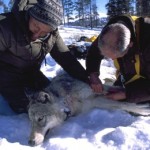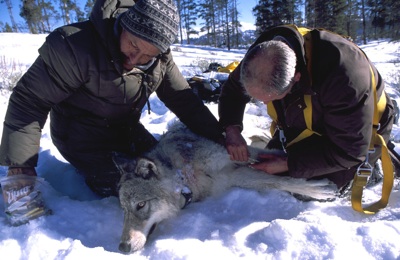 I have always thought that “Wildlife Management” was a loose term. Regardless of geographical location, wildlife lives in fragmented habitats, held inside imaginary borders meant to protect and conserve. It is a daily struggle for humans and wild animals to co-exist. As the human population continues to increase, wildlife is pushed to the edge of extinction. Animals are culled to keep numbers in check according to management plans, as well as illegally poached for their parts or killed out of ignorance and fear. So what does it mean to manage wildlife?
I have always thought that “Wildlife Management” was a loose term. Regardless of geographical location, wildlife lives in fragmented habitats, held inside imaginary borders meant to protect and conserve. It is a daily struggle for humans and wild animals to co-exist. As the human population continues to increase, wildlife is pushed to the edge of extinction. Animals are culled to keep numbers in check according to management plans, as well as illegally poached for their parts or killed out of ignorance and fear. So what does it mean to manage wildlife?
In the early 1900s, the United States government initiated an all out assault against Grey wolves. Wolves were vilified as vicious, nondiscriminatory hunters that killed anything that crossed their path, particular livestock. By 1930, the Gray wolf was almost completely eradicated within the United States. Subsequently, populations of large prey species such as elk soared. Yellowstone National Park quickly became ecologically unbalanced due to high elk numbers; overgrazing of new growth resulted in a collapse of the upland aspen and riparian cottonwood. Furthermore, removal of the wolf opened a niche that was quickly filled by the coyote. Reintroduction measures began in 1966 by biologist recognizing that if conditions continued our once flourishing National parks would be decimated. In 1995 the first packs of Canadian caught grey wolves were reintroduced in Yellowstone and Idaho. Although still persecuted today for killing livestock, a 2010 National Geographic study reported that wolves are only responsible for less than 5% of total kills.
wolves. Wolves were vilified as vicious, nondiscriminatory hunters that killed anything that crossed their path, particular livestock. By 1930, the Gray wolf was almost completely eradicated within the United States. Subsequently, populations of large prey species such as elk soared. Yellowstone National Park quickly became ecologically unbalanced due to high elk numbers; overgrazing of new growth resulted in a collapse of the upland aspen and riparian cottonwood. Furthermore, removal of the wolf opened a niche that was quickly filled by the coyote. Reintroduction measures began in 1966 by biologist recognizing that if conditions continued our once flourishing National parks would be decimated. In 1995 the first packs of Canadian caught grey wolves were reintroduced in Yellowstone and Idaho. Although still persecuted today for killing livestock, a 2010 National Geographic study reported that wolves are only responsible for less than 5% of total kills.
Asian and African elephants are in constant competition with humans for food and space. Human encroachment adjacent to or within designated wildlife areas not only facilitate human-wildlife interactions, but also cause animal displacement. It is well documented that elephants raid crops. Not only do elephants have the capability of eating an entire food crop, but they can also destroy property, damage fencing, and injure or kill people. In addition, Wildlife Management officials have evidence that elephants also destroy their natural environment by pushing over trees and overgrazing. As elephant populations within protected areas such as parks outgrow the available resources, they are either relocated or killed. Elephant relocation programs are expensive. Thirty years ago large scale culling programs resulted in the killing of all mature elephants within a herd and calves shipped to zoos and circuses around the world. Those opposed opt for a more humane way of population control via contraception or translocation; however, those who support culling claim it is the only way to sustain a healthy population and habitat.
 There are thousands of examples of global wildlife management programs; pick a species and chances are they under some sort of population control. My question is simply who is benefiting from wildlife management? What once seemed to be endless wild areas are nothing more than habitat islands peppering a human dominated planet. Wildlife populations are managed at optimal numbers to survive on what tiny plots of land we allot them, nothing more. Management practices appear to be set in place as a means to contain wildlife in order to protect humans and their investments. So, ultimately, who will protect wildlife and their habitat from humans? Imagine if the tables were turned and human populations were held in accordance to availability of their natural resources; the planet would be a much different place.
There are thousands of examples of global wildlife management programs; pick a species and chances are they under some sort of population control. My question is simply who is benefiting from wildlife management? What once seemed to be endless wild areas are nothing more than habitat islands peppering a human dominated planet. Wildlife populations are managed at optimal numbers to survive on what tiny plots of land we allot them, nothing more. Management practices appear to be set in place as a means to contain wildlife in order to protect humans and their investments. So, ultimately, who will protect wildlife and their habitat from humans? Imagine if the tables were turned and human populations were held in accordance to availability of their natural resources; the planet would be a much different place.

